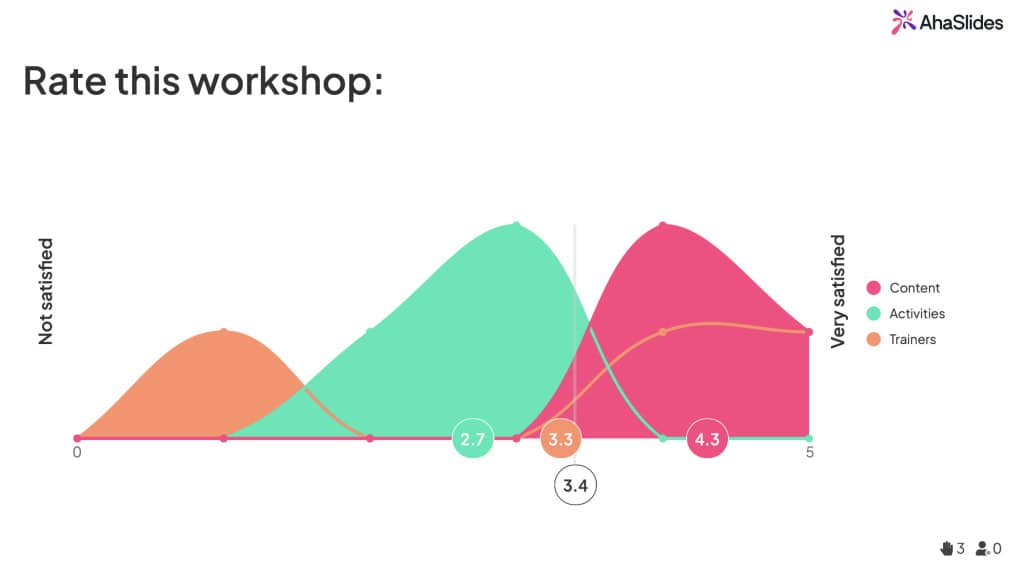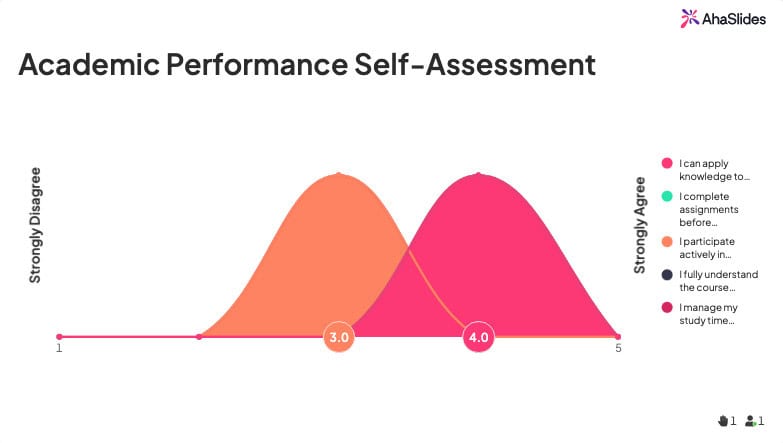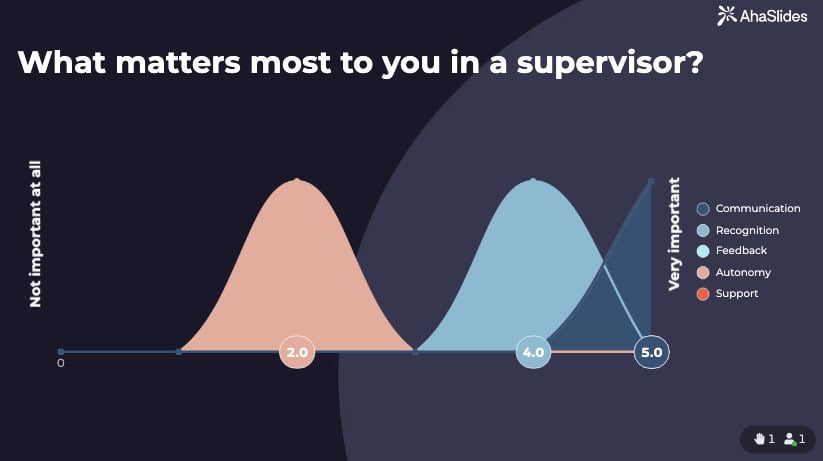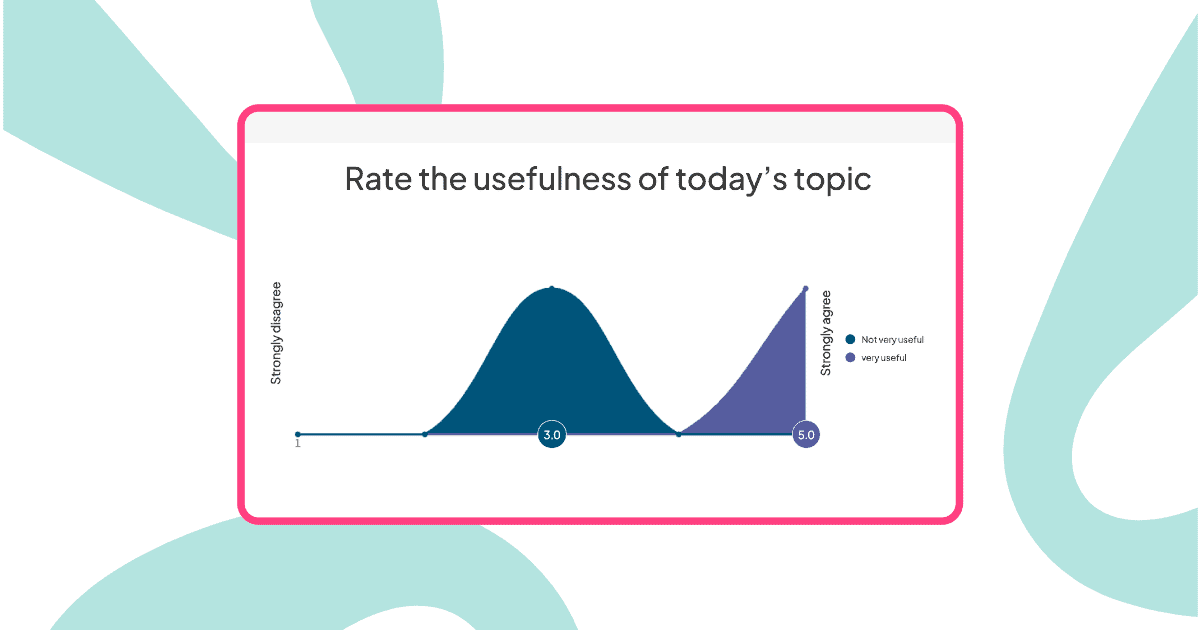You've seen them everywhere: online surveys asking you to rate your agreement from "strongly disagree" to "strongly agree," satisfaction scales after customer service calls, feedback forms measuring how often you experience something. These are Likert scales, and they're the backbone of modern feedback collection.
But understanding how Likert scale questionnaires work—and designing effective ones—makes the difference between vague feedback and actionable insights. Whether you're a trainer evaluating workshop effectiveness, an HR professional measuring employee engagement, or an educator assessing learning experiences, well-crafted Likert scales reveal the nuances that simple yes/no questions miss.
This guide provides practical examples you can adapt immediately, plus essential design principles to create questionnaires that deliver reliable, meaningful data.
Table of Contents
What Are Likert Scale Questionnaires?
A Likert scale questionnaire uses rating scales to measure attitudes, opinions, or behaviours. First introduced by psychologist Rensis Likert in 1932, these scales present statements that respondents rate along a continuum—typically from complete disagreement to complete agreement, or from very dissatisfied to very satisfied.
The genius lies in capturing intensity, not just position. Rather than forcing binary choices, Likert scales measure how strongly someone feels, providing nuanced data that reveals patterns and trends.

Types of Likert Scales
5-point vs. 7-point scales: The 5-point scale (the most common) balances simplicity with useful detail. A 7-point scale offers more granularity but increases respondent effort. Research suggests both yield similar results for most purposes, so favour 5-point scales unless subtle differences matter critically.
Odd vs. even scales: Odd-numbered scales (5-point, 7-point) include a neutral midpoint—useful when genuine neutrality exists. Even-numbered scales (4-point, 6-point) force respondents to lean positive or negative, eliminating fence-sitting. Use even scales only when you genuinely need to push for a position.
Bipolar vs. unipolar: Bipolar scales measure two opposite extremes (strongly disagree to strongly agree). Unipolar scales measure one dimension from zero to maximum (not at all satisfied to extremely satisfied). Choose based on what you're measuring—opposing viewpoints need bipolar, intensity of one quality needs unipolar.
7 Sample Likert Scale Questionnaires
1. Academic Performance Self-Assessment
Track student progress and identify areas needing support with this self-evaluation questionnaire.
| Statement | Response Options |
|---|---|
| I'm achieving the grades I set as goals for my classes | Not at all → Rarely → Sometimes → Often → Always |
| I complete all required readings and assignments on time | Never → Rarely → Sometimes → Often → Always |
| I dedicate sufficient time to succeed in my courses | Definitely not → Not really → Somewhat → Mostly → Completely |
| My current study methods are effective | Very ineffective → Ineffective → Neutral → Effective → Very effective |
| Overall, I'm satisfied with my academic performance | Very dissatisfied → Dissatisfied → Neutral → Satisfied → Very satisfied |
Scoring: Assign 1-5 points per response. Total score interpretation: 20-25 (Excellent), 15-19 (Good, room for improvement), Below 15 (Needs significant attention).

2. Online Learning Experience
Evaluate virtual training or education effectiveness to improve remote learning delivery.
| Statement | Strongly Disagree | Disagree | Neutral | Agree | Strongly Agree |
|---|---|---|---|---|---|
| Course materials were well-organised and easy to follow | ☐ | ☐ | ☐ | ☐ | ☐ |
| I felt engaged with the content and motivated to learn | ☐ | ☐ | ☐ | ☐ | ☐ |
| The instructor provided clear explanations and feedback | ☐ | ☐ | ☐ | ☐ | ☐ |
| Interactive activities reinforced my learning | ☐ | ☐ | ☐ | ☐ | ☐ |
| Technical issues did not hinder my learning experience | ☐ | ☐ | ☐ | ☐ | ☐ |
| My overall online learning experience met expectations | ☐ | ☐ | ☐ | ☐ | ☐ |
3. Customer Satisfaction Survey
Measure customer sentiment about products, services, or experiences to identify improvement opportunities.
| Question | Response Options |
|---|---|
| How satisfied are you with the quality of our product/service? | Very dissatisfied → Dissatisfied → Neutral → Satisfied → Very satisfied |
| How would you rate the value for money? | Very poor → Poor → Fair → Good → Excellent |
| How likely are you to recommend us to others? | Very unlikely → Unlikely → Neutral → Likely → Very likely |
| How responsive was our customer service? | Very unresponsive → Unresponsive → Neutral → Responsive → Very responsive |
| How easy was it to complete your purchase? | Very difficult → Difficult → Neutral → Easy → Very easy |
4. Employee Engagement & Wellbeing
Understand workplace satisfaction and identify factors affecting productivity and morale.
| Statement | Strongly Disagree | Disagree | Neutral | Agree | Strongly Agree |
|---|---|---|---|---|---|
| I clearly understand what's expected of me in my role | ☐ | ☐ | ☐ | ☐ | ☐ |
| I have the necessary resources and tools to work efficiently | ☐ | ☐ | ☐ | ☐ | ☐ |
| I feel motivated and engaged in my work | ☐ | ☐ | ☐ | ☐ | ☐ |
| My workload is manageable and sustainable | ☐ | ☐ | ☐ | ☐ | ☐ |
| I feel valued and appreciated by my team and leadership | ☐ | ☐ | ☐ | ☐ | ☐ |
| I'm satisfied with my work-life balance | ☐ | ☐ | ☐ | ☐ | ☐ |
5. Workshop & Training Effectiveness
Gather feedback on professional development sessions to improve future training delivery.
| Statement | Strongly Disagree | Disagree | Neutral | Agree | Strongly Agree |
|---|---|---|---|---|---|
| The training objectives were clearly communicated | ☐ | ☐ | ☐ | ☐ | ☐ |
| Content was relevant to my professional needs | ☐ | ☐ | ☐ | ☐ | ☐ |
| The facilitator was knowledgeable and engaging | ☐ | ☐ | ☐ | ☐ | ☐ |
| Interactive activities enhanced my understanding | ☐ | ☐ | ☐ | ☐ | ☐ |
| I can apply what I learned to my work | ☐ | ☐ | ☐ | ☐ | ☐ |
| The training was a valuable use of my time | ☐ | ☐ | ☐ | ☐ | ☐ |
6. Product Feedback & Feature Evaluation
Collect user opinions on product features, usability, and satisfaction to guide development.
| Statement | Response Options |
|---|---|
| How easy is the product to use? | Very difficult → Difficult → Neutral → Easy → Very easy |
| How would you rate the product's performance? | Very poor → Poor → Fair → Good → Excellent |
| How satisfied are you with the available features? | Very dissatisfied → Dissatisfied → Neutral → Satisfied → Very satisfied |
| How likely are you to continue using this product? | Very unlikely → Unlikely → Neutral → Likely → Very likely |
| How well does the product meet your needs? | Not at all → Slightly → Moderately → Very well → Extremely well |
7. Event & Conference Feedback
Assess attendee satisfaction with events to improve future programmes and experiences.
| Question | Response Options |
|---|---|
| How would you rate the overall event quality? | Very poor → Poor → Fair → Good → Excellent |
| How valuable was the content presented? | Not valuable → Slightly valuable → Moderately valuable → Very valuable → Extremely valuable |
| How would you rate the venue and facilities? | Very poor → Poor → Fair → Good → Excellent |
| How likely are you to attend future events? | Very unlikely → Unlikely → Neutral → Likely → Very likely |
| How effective was the networking opportunity? | Very ineffective → Ineffective → Neutral → Effective → Very effective |
Common Mistakes to Avoid
Using too many scale points. More than 7 points overwhelms respondents without adding meaningful data. Stick with 5 points for most purposes.
Inconsistent labelling. Switching scale labels between questions forces respondents to recalibrate constantly. Use consistent language throughout.
Double-barreled questions. Combining multiple concepts in one statement ("The training was informative and entertaining") prevents clear interpretation. Separate into distinct statements.
Leading language. Phrases like "Don't you agree..." or "Obviously..." bias responses. Use neutral phrasing.
Survey fatigue. Too many questions reduces data quality as respondents rush through. Prioritise essential questions.
Analysing Likert Scale Data
Likert scales produce ordinal data—responses have meaningful order but the distance between points isn't necessarily equal. This affects proper analysis.
Use median and mode, not just mean. The middle response (median) and most common response (mode) provide more reliable insights than averages for ordinal data.
Examine frequency distributions. Look at how responses cluster. If 70% select "agree" or "strongly agree," that's a clear pattern regardless of the exact average.
Present data visually. Bar charts showing response percentages communicate results more clearly than statistical summaries.
Look for patterns across items. Multiple low ratings on related statements reveal systemic issues worth addressing.
Consider response bias. Social desirability bias may inflate positive responses on sensitive topics. Anonymous surveys reduce this effect.
How to Create Likert Scale Questionnaires with AhaSlides
AhaSlides makes creating and deploying Likert scale surveys straightforward, whether for live presentations or asynchronous feedback collection.
Step 1: Sign up for a free AhaSlides account.
Step 2: Create a new presentation or browse the template library for pre-built survey templates in the 'Surveys' section.
Step 3: Select the 'Rating Scale' slide type from your presentation editor.
Step 4: Enter your statement(s) and set the scale range (typically 1-5 or 1-7). Customise the labels for each point on your scale.
Step 5: Choose your presentation mode:
- Live mode: Click 'Present' so participants access your survey in real-time using their devices
- Self-paced mode: Navigate to Settings → Who takes the lead → Select 'Audience (self-paced)' to gather responses asynchronously
Bonus: Export results to Excel, PDF, or JPG format via the 'Results' button for easy analysis and reporting.
The platform's real-time response display works excellently for workshop feedback, training evaluations, and team pulse checks where immediate visibility drives discussion.

Moving Forward with Effective Surveys
Likert scale questionnaires transform subjective opinions into measurable data when designed thoughtfully. The key lies in clear statements, appropriate scale selection, and consistent formatting that respects respondents' time and attention.
Start with one of the examples above, adapt it to your context, and refine based on the responses you receive. The best questionnaires evolve through use—each iteration teaching you more about what questions truly matter.
Ready to create engaging surveys that people actually want to complete? Explore AhaSlides' free survey templates and start gathering actionable feedback today.
Frequently Asked Questions
What is a Likert scale in questionnaires?
A Likert scale is a commonly used scale in questionnaires and surveys to measure attitudes, perceptions or opinions. Respondents specify their level of agreement to a statement.
What are the 5 Likert scale questionnaires?
The 5-point Likert scale is the most commonly used Likert scale structure in questionnaires. The classic options are: Strongly Disagree - Disagree - Neutral - Agree - Strongly Agree.
Can you use a Likert scale for a questionnaire?
Yes, the ordinal, numerical and consistent nature of Likert scales makes them ideally suited for standardized questionnaires seeking quantitative attitudinal data.








